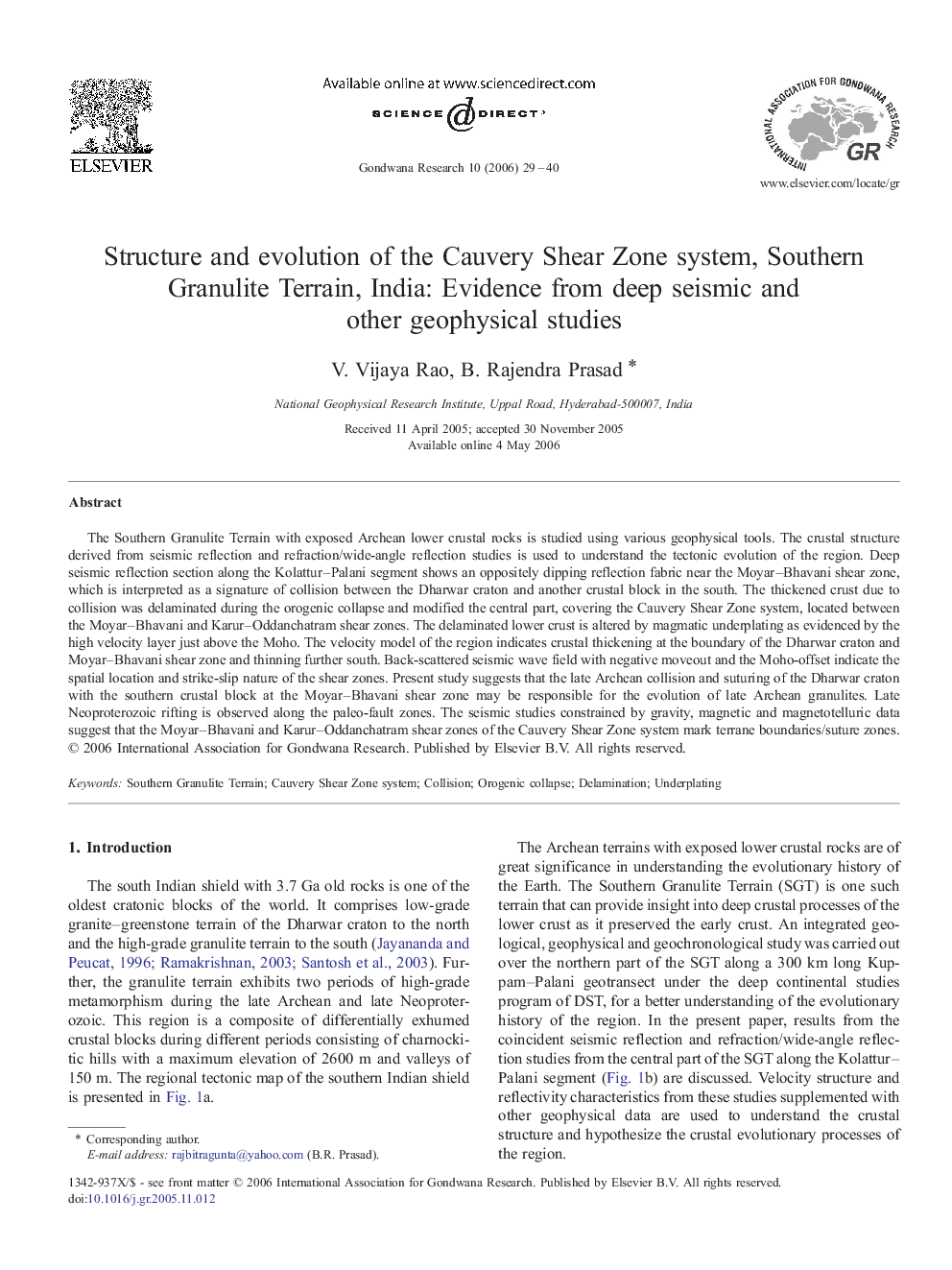| Article ID | Journal | Published Year | Pages | File Type |
|---|---|---|---|---|
| 4727903 | Gondwana Research | 2006 | 12 Pages |
The Southern Granulite Terrain with exposed Archean lower crustal rocks is studied using various geophysical tools. The crustal structure derived from seismic reflection and refraction/wide-angle reflection studies is used to understand the tectonic evolution of the region. Deep seismic reflection section along the Kolattur–Palani segment shows an oppositely dipping reflection fabric near the Moyar–Bhavani shear zone, which is interpreted as a signature of collision between the Dharwar craton and another crustal block in the south. The thickened crust due to collision was delaminated during the orogenic collapse and modified the central part, covering the Cauvery Shear Zone system, located between the Moyar–Bhavani and Karur–Oddanchatram shear zones. The delaminated lower crust is altered by magmatic underplating as evidenced by the high velocity layer just above the Moho. The velocity model of the region indicates crustal thickening at the boundary of the Dharwar craton and Moyar–Bhavani shear zone and thinning further south. Back-scattered seismic wave field with negative moveout and the Moho-offset indicate the spatial location and strike-slip nature of the shear zones. Present study suggests that the late Archean collision and suturing of the Dharwar craton with the southern crustal block at the Moyar–Bhavani shear zone may be responsible for the evolution of late Archean granulites. Late Neoproterozoic rifting is observed along the paleo-fault zones. The seismic studies constrained by gravity, magnetic and magnetotelluric data suggest that the Moyar–Bhavani and Karur–Oddanchatram shear zones of the Cauvery Shear Zone system mark terrane boundaries/suture zones.
